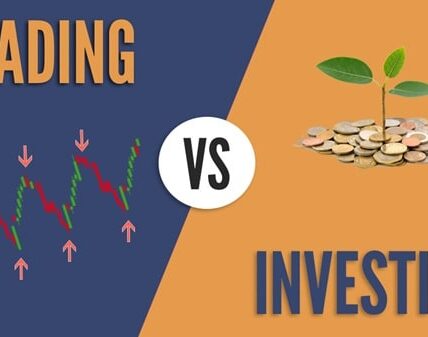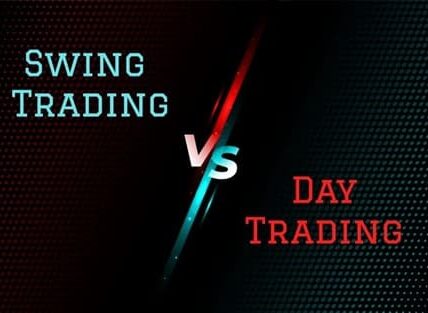In stock and forex trading, timing is everything. Traders rely on a variety of tools to analyze price movements, identify trends, and make informed decisions. Among these tools, trading indicators play one of the most crucial roles.
Whether you’re a beginner or an experienced trader, understanding what trading indicators are and how they work can help you improve your strategy, manage risks, and make better entry or exit decisions in the market.
What Are Trading Indicators?

Trading indicators are mathematical calculations or visual tools displayed on a trading chart. They use historical price, volume, and open interest data to help traders interpret market conditions and forecast possible future price movements.
In simple terms, indicators act as a guide or signal generator. They don’t predict the future with certainty, but they provide valuable insights into market momentum, trend strength, and potential reversal points.
Types of Trading Indicators
Broadly, trading indicators can be divided into two main categories:
- Leading Indicators: These provide signals before a price move happens, helping traders anticipate potential changes in trend direction.
Example: Relative Strength Index (RSI), Stochastic Oscillator. - Lagging Indicators: These confirm a trend after it has started, reducing the chances of false signals.
Example: Moving Averages, MACD (Moving Average Convergence Divergence).
How Do Trading Indicators Work?
Trading indicators work by applying mathematical formulas to a security’s price or volume data. The resulting values are plotted on charts to help visualize trends and momentum.
For example:
- A Moving Average smooths out price data to show the general direction of the market (trend).
- An RSI compares recent gains and losses to indicate whether a stock is overbought or oversold.
Traders combine multiple indicators to confirm signals and reduce risk. The key is to use them as decision-support tools, not as guarantees of success.
Popular Trading Indicators and Their Functions
Let’s take a look at some of the most widely used indicators and how they work:
1. Moving Averages (MA)
A Moving Average helps to identify the overall trend direction by averaging a stock’s price over a specific period.
- Simple Moving Average (SMA): Averages the closing prices for a given number of days (e.g., 20-day SMA).
- Exponential Moving Average (EMA): Gives more weight to recent prices, making it more responsive to changes.
How it works: When the current price moves above the moving average, it signals a possible uptrend. Conversely, when the price falls below it, it indicates a potential downtrend.
Usage Example: A 50-day MA crossing above a 200-day MA is called a “Golden Cross”, which is a bullish signal. The opposite, a “Death Cross”, is bearish.
2. Relative Strength Index (RSI)
The RSI is a momentum indicator that measures the speed and change of price movements on a scale from 0 to 100.
How it works:
- RSI above 70 indicates that an asset is overbought (possible sell signal).
- RSI below 30 indicates that an asset is oversold (possible buy signal).
Usage Example: If the RSI for Infosys is 80, it suggests the stock may be overbought and could face a short-term correction.
3. Moving Average Convergence Divergence (MACD)
The MACD helps traders identify trend changes and momentum strength.
How it works: It calculates the difference between two EMAs (typically the 12-day and 26-day). A signal line (9-day EMA) is then plotted on top of the MACD line.
- When the MACD crosses above the signal line → Bullish signal
- When it crosses below the signal line → Bearish signal
Usage Example: If the MACD line crosses above the signal line on the chart, traders might consider buying, expecting an upward move.
4. Bollinger Bands
Bollinger Bands consist of three lines: a middle moving average, an upper band, and a lower band. The bands expand or contract based on market volatility.
How it works:
- When prices move near the upper band → asset might be overbought.
- When prices move near the lower band → asset might be oversold.
Usage Example: A stock bouncing off the lower Bollinger Band can signal a potential buying opportunity if confirmed by other indicators.
5. Stochastic Oscillator
The Stochastic Oscillator compares a security’s closing price to its price range over a specific period.
How it works:
It moves between 0 and 100, similar to RSI.
- A reading above 80 indicates overbought conditions.
- A reading below 20 indicates oversold conditions.
Usage Example: If a stock’s stochastic value is 85, it could be nearing a reversal, and traders might prepare to sell.
How to Use Indicators Effectively
- Don’t Rely on a Single Indicator:
Always confirm signals using multiple indicators or other analysis tools. - Combine with Price Action:
Indicators should complement chart patterns and support/resistance analysis. - Understand Lag:
Remember that indicators are based on historical data — they can’t predict the future but can guide decision-making. - Adjust Parameters:
Customize the indicator settings based on your trading style (e.g., short-term vs. long-term). - Avoid Overloading Charts:
Using too many indicators can cause confusion. Stick to 2–3 reliable ones that suit your strategy.
Advantages of Using Trading Indicators
- Helps identify market trends
- Confirms entry and exit points
- Improves accuracy of trading decisions
- Reduces emotional trading
- Supports automated or algorithmic trading
Limitations of Trading Indicators
- Indicators are based on past data, not future predictions
- Can give false signals during sideways markets
- Overuse can lead to confusion or conflicting signals
Conclusion
Trading indicators are powerful tools that help traders analyze market behavior, spot opportunities, and manage risks effectively. From Moving Averages that show trends to RSI and MACD that measure momentum, each indicator offers unique insights.
However, no indicator is perfect. Successful traders use them wisely—combining technical indicators with solid research, risk management, and discipline.
In the end, trading indicators don’t replace experience—they enhance decision-making and help traders stay consistent in an unpredictable market.








